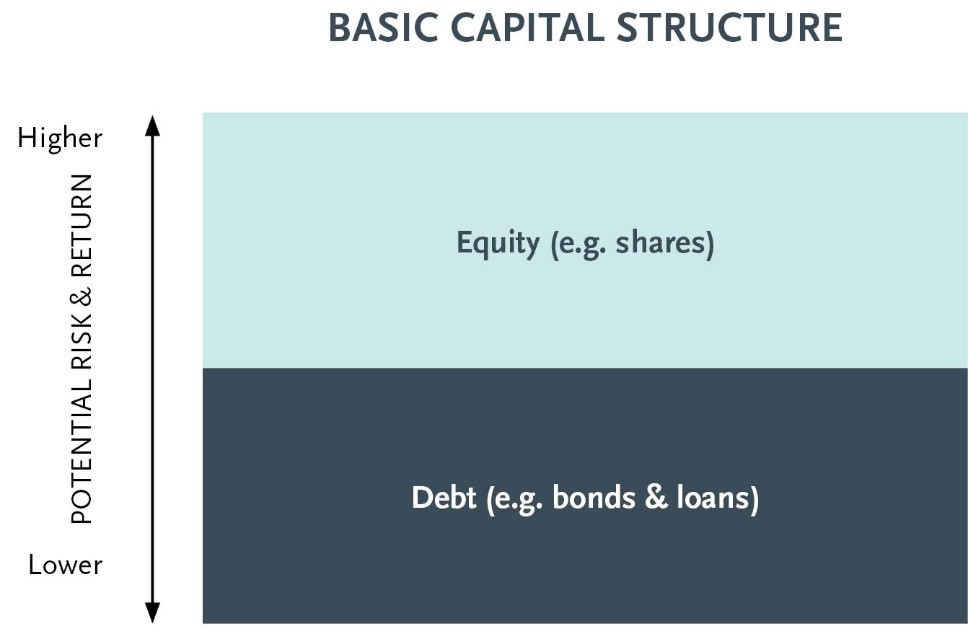Sponsored Content
Henry Elgood, Head of Governance & Risk, Trilogy Funds Management
To invest well, you need to consider your financial goals, investing time frame and risk tolerance. Investment risk is the likelihood that you’ll lose some or all the money you’ve invested due to an investment falling in value or not performing as expected.
The capital structure of an investment is a useful tool that enables you to compare a wide range of investments in terms of their risk and the potential returns they offer.
The higher you are on a capital structure, the higher your risk and the greater your potential returns. Conversely, the lower you are on the capital structure, the lower your risk but the less you are likely to earn over time.

Figure 1: A basic capital structure
In the case of a very basic capital structure consisting only of debt and equity, equity sits at the top as shown in Figure 1. It is expected to produce the greatest profit in the long run.
From Figure 1, being on the bottom is not necessarily a bad thing when it comes to capital structures, because the debt values higher in capital security than equity. Investors here take precedence over equity holders.
As a shareholder, you can expect to receive dividend payments when a company performs well, but you may get no dividends at all when it experiences difficult times.
Bondholders, on the other hand, generally expect more predictable returns based on agreed rates of interest. That’s why investments in bonds and other forms of long-term debt are referred to as fixed-income investments.
As with shares, bond prices can move, but they are generally less volatile. It’s also important to remember that equity investors such as shareholders of companies face greater risk of losing their capital altogether, because they are the last to be repaid should a company fail.
To build a well-balanced portfolio, you should invest across the different levels of the capital structure, accumulating a diverse mix of growth and defensive assets that suits your risk profile by spreading your investments across several asset classes such as property, bonds and shares. These can be invested in directly or through professionally managed investment funds and exchange traded funds (ETFs).

